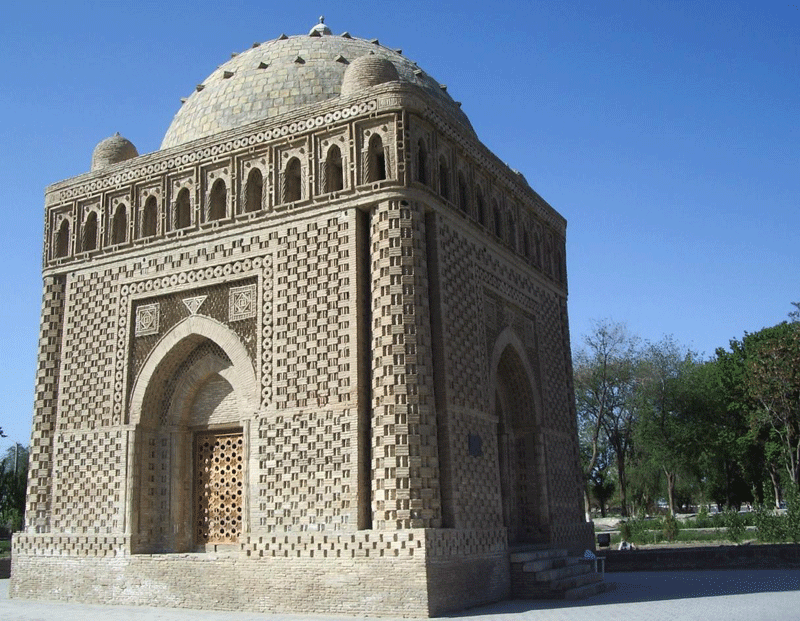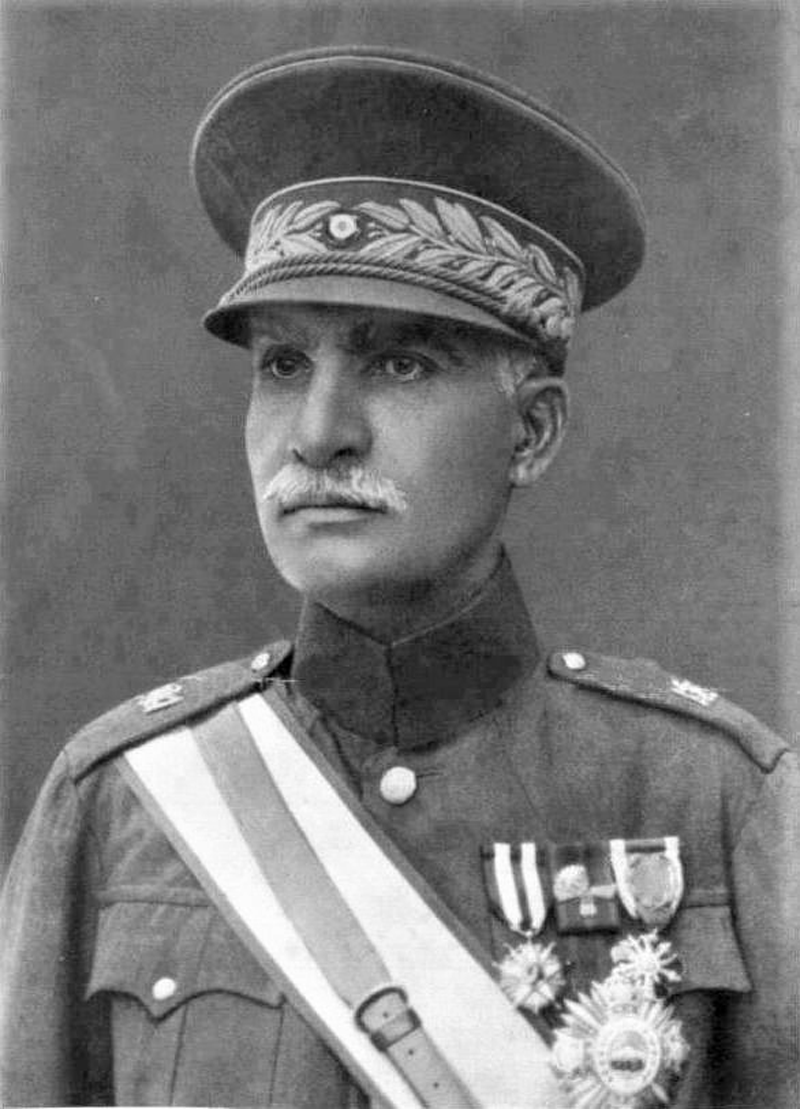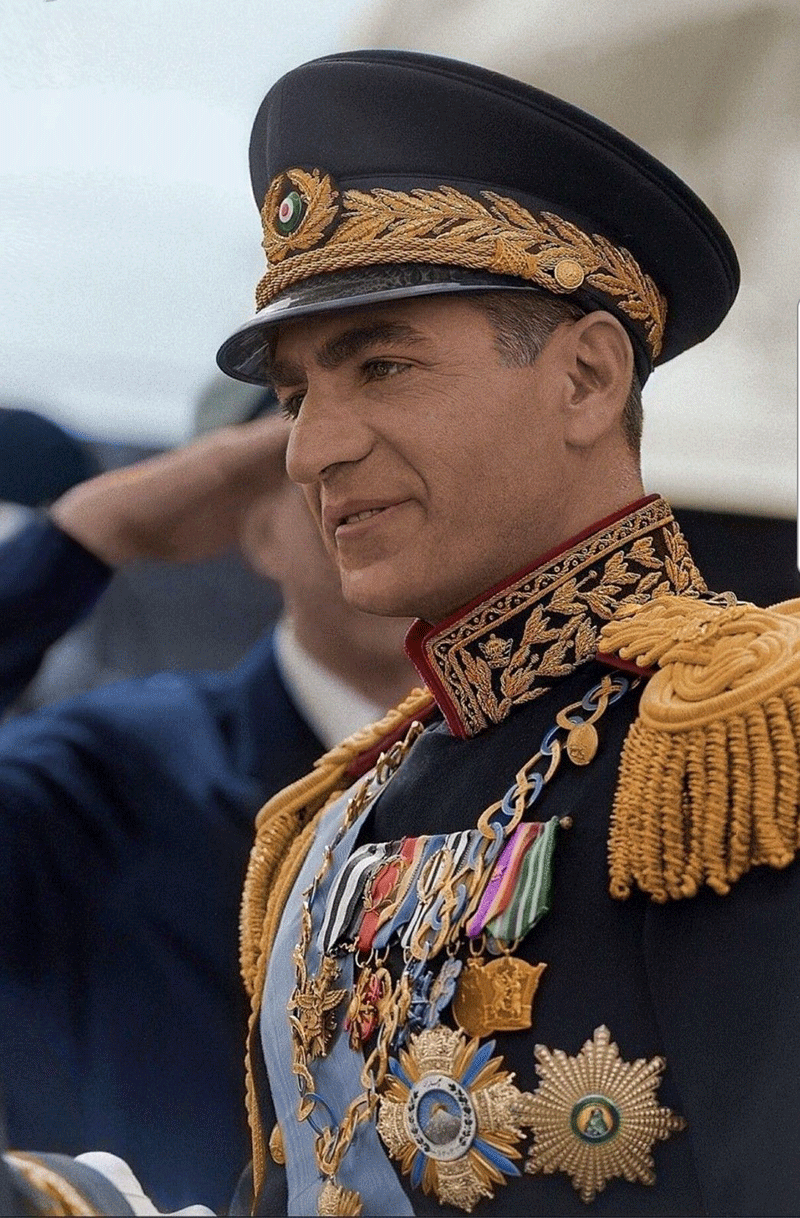History of iran | Historical Periods of Iran
Historians have divided the historical periods of Iran into three main epochs for the convenience of study: Pre-Islamic, Islamic, and Contemporary. This classification aims to facilitate the exploration of Iran’s rich history. The Pre-Islamic era encompasses events from the Elamite civilization to the Sassanian Empire, while the Islamic era covers the dynasties that emerged after the introduction of Islam to Iran, extending until the end of the Qajar dynasty. The Contemporary era includes the modern history of Iran.
What You Need to Know About the History of Iran:
Pre-Islamic Era in the History of Iran:
Aryan migration to the Iranian Plateau.
Elamite civilization before the arrival of Aryans.
Elamite Dynasty:
Elamite Ancient Period (3200 to 539 BCE).
Notable rulers: Ewan and Simashki.
Elamites established their domain called “Hetmati” in the southwestern part of the Iranian Plateau.
Elamite Ancient Period:
Elamite rule from 1600 to 2700 BCE.
Three dynasties: Ewan, Simashki, and Suskalmah.
Limited cultural and economic development due to the lack of favorable conditions.
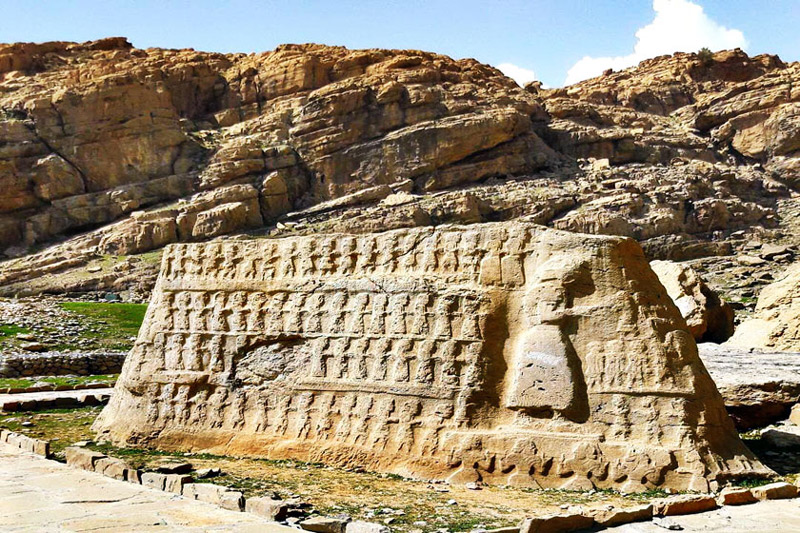
Elamite Middle Period:
Elamite rule from 1500 to 1100 BCE.
Rulers adopted the title “King of Susa and Anshan.”
Flourishing period in terms of economy, architecture, and art.
Notable structures like the Ziggurat of Chogha Zanbil were built.
Conflicts with Assyria resulted in Elamite-Babylonian alliance against Assyria.
Elamite Neo Period:
Elamite rule from 1100 BCE to 539 CE.
Aryan migrations led to the restriction of Elamite territory.
Rise of the Medes, leading to the transformation of Anshan into Pars (Persia).
Ashurbanipal of Assyria conquered Elam, leading to its decline.
Elam succumbed to the forces of Ashurbanipal, the Assyrian king, in 640 BCE.
The Aryan Migration to the Iranian Plateau
During the third period of the Elamite rule, the Medes, a group of Aryans, established their power in the north-western region of Iran and took control of a part of the country. The Parthians (Arsacids) and the Persians (Achaemenids and their successors, the Sassanians) were also other Aryan tribes that later formed ruling dynasties in the Iranian Plateau.
Various theories exist regarding the origin, race, and migration of Aryans to Iran, leading to debates among scholars. Some consider Siberia as the homeland of Aryans, while others believe their origin lies within the geographical boundaries of ancient Iran. There are also theories associating the Aryan homeland with regions around the Caspian Sea, Sistan, or the Persian Gulf.
According to historical documents, Aryans entered the western regions of Iran around 1800 BCE. The first Aryan dynasty, known as the Medes, was established in the capital city of Hegmataneh (modern-day Hamadan) in western Iran.
Median Dynasty (675 to 550 BCE)
The formation of the Median dynasty is not precisely documented. Their geographical domain was situated in the north-western part of the Iranian Plateau, bordered by Urartu to the north, Elam to the south, and Mesopotamian states to the west. Diako, after overcoming the Scythians, unified the Median tribes to establish an independent state. Herodotus, a prominent Greek historian, considered Diako the first chosen ruler among the people and an executor of justice.
The Medes ruled Iran for about 130 years, with four kings during this period. Hoakhtar was the most significant ruler, fostering political and economic growth. Astyages (Azhdahaak or Ishtovigu) was the last king of this dynasty, and his weak rule facilitated the rise of Cyrus the Great, the Achaemenid ruler.
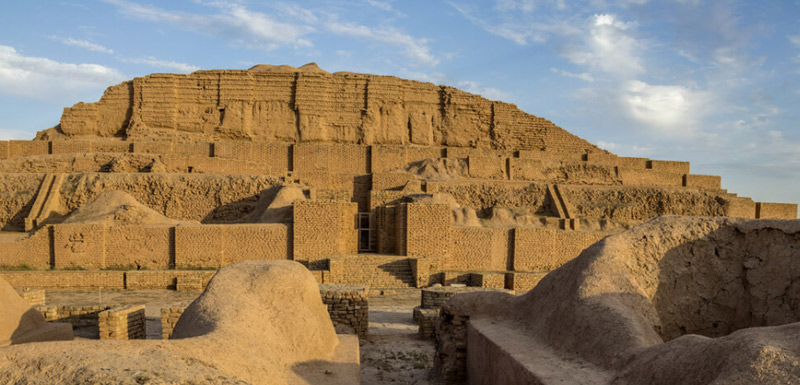
Achaemenid Dynasty (550 to 330 BCE)
The Achaemenids derived their name from Hakhamanish, their forefather. Cyrus the Great, the most prominent ruler of the Achaemenid dynasty, transformed their rule into a vast empire in 550 BCE and met its demise in 330 BCE with Alexander the Great’s conquest. During this era, the Achaemenids achieved significant victories, capturing parts of Greece and Babylon, expanding their political influence.
The Persians, part of the Iranian Aryans, were the core of the Achaemenid government. They initially resided near Lake Urmia and moved southwest due to the decline of Elamite authority. The country’s name, Parsua, was first used in Assyrian inscriptions.
The Persians exploited the conflict between the Medes and Assyria, taking over Anshan. With the decline of the Elamite government, the Persians annexed Anshan, and the region gradually became known as Pars (Persis). The Achaemenid Empire emerged as Cyrus the Great defeated the Medes, and under his reign, they conquered Babylon and Lydia. Cambyses, Darius the Great, and Xerxes followed, each leaving their mark on the empire’s history.
The Achaemenid Empire reached its peak during the reign of Darius the Great. The empire’s geographical expansion continued through his conquests, but its downfall began with Xerxes’ rule. After several internal conflicts, Darius III became the last Achaemenid king, facing Alexander’s invasion in 330 BCE.
The end of the Achaemenids marked a significant event in the history of ancient Iran, with Alexander’s conquest leading to cultural and historical transformations.
The Seleucid Dynasty
With Alexander’s victory from 330 to 332 BCE, significant changes occurred in the history of Iran. Centuries later, Iranian narratives describe this event as the greatest tragedy. After defeating Darius III and establishing control over Iran, Alexander ordered the translation of Iranian literary and scientific works into Greek, while destroying the rest. In an attempt to integrate Greek civilization, he instructed 10,000 of his commanders and soldiers to marry Iranian women. Additionally, around 30,000 young Iranians were recruited into his army. His goals were to reduce the concentration of power in Greek hands and encourage interaction and language learning between Iranians and Greeks.
After Alexander’s death, Seleucus, one of his famous generals, established the Seleucid Empire centered in Syria, transforming it into a large empire. This era witnessed the emergence of Greek-speaking cities in Mesopotamia, and the Greek language gradually became the language of the ruling elite, the military, and urban dwellers.
Seleucus, being one of Alexander’s commanders, assumed the Iranian throne after him. During this period, inscriptions and coins were written in Greek, and Greek culture dominated Iranian civilization. However, in areas distant from Greek-speaking cities, people continued to speak Persian. The Hellenization policy by Alexander did not have a significant and lasting impact on Iranian culture. The Seleucids ruled Iran from 312 to 129 BCE until the rise of the Arsacids and Parthians.
The Parthian Dynasty
The Parthians ruled Iran from 250 BCE to approximately 266 CE, making it one of the longest historical dynasties in Iran. They were considered Iranian Aryans, but due to a nomadic lifestyle, they had limited exposure to science and knowledge. Consequently, the rulers of this dynasty sought to revive Iranian sciences and culture, but paradoxically, they were influenced by the civilizations of other nations, particularly the Greeks.
During the rule of the Arsacid kings from the establishment of the dynasty until the time of Gotarzes (20 to 51 CE), efforts were made to promote Greek culture and Hellenization. They also utilized the Greek script for inscriptions and coins. Initially, the court used the Greek language, but gradually, the Parthian language replaced it, and with the decree of Balash, the Parthian king (51 to 78 CE), many texts were translated into the Parthian language.

When the Seleucids were involved in internal conflicts, the Parni tribe in the northeastern region of Iran rebelled against their rule and, led by Arsaces, established a small government in the city of Nisa (in present-day Khorasan). This event occurred in 247 BCE and became the starting point of the Arsacid era.
The Parthians ruled over eastern Iran for approximately 470 years. After the murder of Arsaces, his brother Tiridates took the throne from 248 to 217 BCE. After him, Ardavan I became the Arsacid king, expanding the empire’s territory. Mehrdad I, one of the powerful kings of this dynasty, reigned from 171 to 139 BCE, turning his rule into one of the great empires of the world. He defeated the Seleucids, annexed Media, Bactria, Elymais, Pars, and Babylon to his realm, and established political relations with the Romans.
After Mehrdad I, his son Farhad II took over the throne. He suppressed the Seleucid rebellion led by Antiochus VII and permanently ended the Seleucid influence on Iran. Farhad II was killed by the mercenaries of the Scythian army. Other reports attribute the cause of Farhad II’s death to the betrayal of Greek soldiers who had joined his service. After Farhad II, his uncle Ardavan took power, but he was killed in the war against the Scythians.
Mehrdad II, the greatest Arsacid king and son of Ardavan, ascended the throne from 124 to 87 BCE. He defeated the Scythians, brought the eastern lands under his obedience, expanded his influence to Asia Minor and Armenia, and established political relations with the Romans. The reign of Mehrdad II marked a period of political coherence and greatness for Iran. Following him, several kings succeeded until finally, it was the turn of Farhad III.
Farhad III and Mehrdad III quickly stepped down from power, and Ardashir took the throne of the Arsacids. Among the significant events of his period was the Battle of Haran between Iran and Rome, in which Iranian commanders defeated Roman forces. Farhad IV succeeded Ardashir but was overthrown due to dissatisfaction among the Arsacid nobles. After him, Ardavan II took over and then Tiridates II. However, shortly afterward, they relinquished their positions to another, and eventually, the throne passed to Balash I. One of the most important events of Balash I’s reign, from 147 to 193 CE, was the gathering and compilation of the Avesta.
Following Balash I, Pakor II assumed power. During his time, the decline of the Arsacids began, as wars between Iran and Rome resumed from 147 to 193 CE. The Parthian forces, initially victorious, were defeated, and Armenia was surrendered. Ardavan V, the last Arsacid king, defeated Ardavan VI to make a peace treaty with the Romans. However, in the war against them, he faced defeat, and the capital of the Arsacids was handed over to Ardeshir Babakan, the founder of the Sasanian Empire.
The Sasanians (226 to 651 CE)
The Sasanians emerged from Pars and established a dynasty based on religious unity and statehood, overthrowing the Parthian government of the Arsacids. This dynasty claimed to be the successors of the Achaemenid dynasty and, at the height of their rule, demonstrated their superiority in three external fronts: the east against the Kushans, the north against Armenia, and the west against the Romans. Within their territory, they achieved internal unity by combating tribal rule and political crises, contributing to the consolidation of Iran.
The formation of the Sasanian dynasty is surrounded by a halo of myth and ambiguity. According to historical accounts, “Sasan” was the grandfather of Ardashir, the priest of the Anahita temple in Estakhr. He married a local ruler’s daughter, increased his power, and eventually staged a coup against him, taking control. After him, “Babak” took power instead of Sasan. Babak had two sons named Shapur and Ardashir. Shapur perished in an incident, and Ardashir succeeded him.
Ardashir became the ruler of Pars. He defeated the last Arsacid king, Ardavan V, in three consecutive battles and took his place. Ardashir organized a disciplined army and, by strengthening the foundations of his empire, pursued his goals one after another. Later, by choosing Shapur as his successor, Ardashir stepped aside.
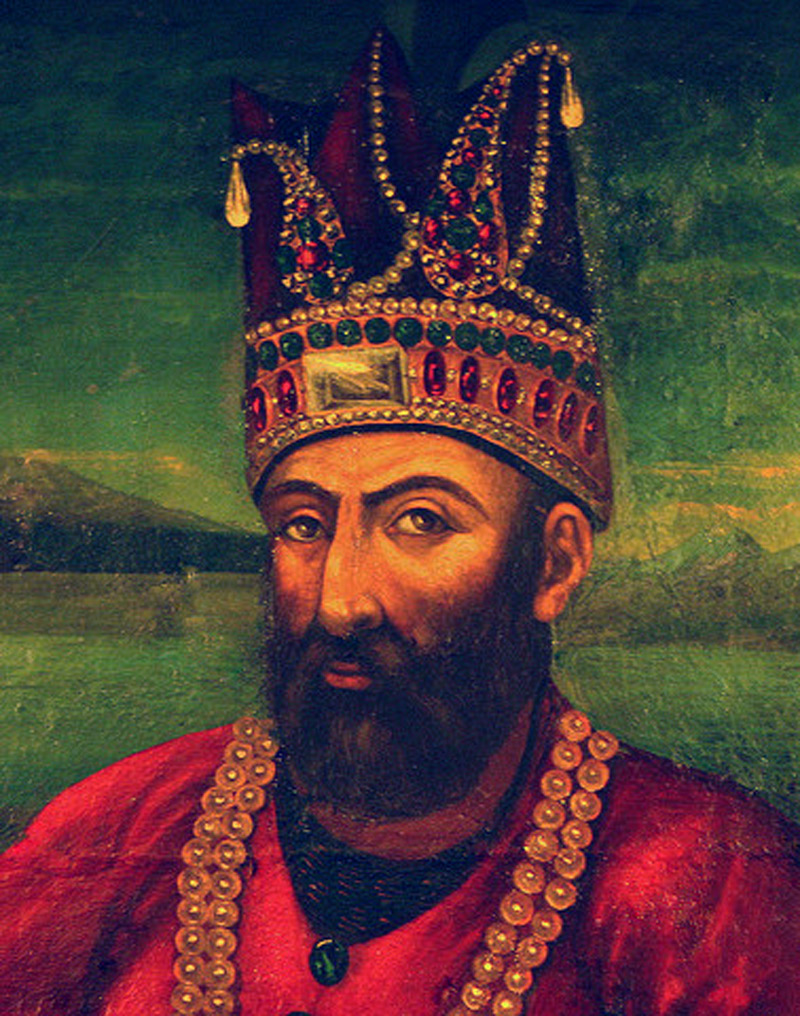
The Sasanians considered themselves the successors of the Achaemenids, and Ardashir was the founder of this dynasty. “Shapur I” succeeded his father. He defeated the Kushans, regained Armenia from the Romans, and incorporated it into the Iranian territory. Shapur, after 15 years, engaged in a significant conflict with the Romans and achieved remarkable success. The conquest of Antioch, Syria, and the capture of Emperor Valerian were the results of his battles with the Romans.
“Hormizd I” and “Bahram I,” sons of Shapur I, succeeded him, but their rule was short-lived, and little information is available about their era. “Bahram II” took the throne after Bahram I. During his period, Iran suffered defeats against the Romans and relinquished Armenia to them again.
“Bahram III” also gave up his rule to “Narseh” after a few months, but Narseh faced a defeat against the Romans and lost Armenia. After that, there was no war between Iran and Armenia for 40 years. “Hormizd II” took over after Narseh, but he died soon, and the rule passed to “Shapur II” Sasanian.
“Shapur II” ruled the Sasanian Empire from 309 to 379 CE for 70 years. He first eliminated the Kushans and annexed Bactria to Iran. Shapur then started a war with the Romans and achieved significant success. The conquest of Antioch, Syria, and the capture of Valerian were the results of his battles with the Romans.
“Hormizd II” and “Bahram IV,” Shapur I’s sons, took power after him, but their period of governance was short, and information about it is scarce. “Bahram V” ascended the throne after Bahram IV. During his reign, internal issues such as drought, consecutive famines, and heavy taxation emerged. Conflicts between Christians, Zoroastrians, and Jews escalated, leading to internal turmoil and adding to the difficulties of his reign.
After Bahram V, conflicts over succession began among his sons, and “Kavad I” defeated other rivals. Kavad faced economic problems as the primary feature of his rule. The payment of tribute to the Hephthalites, famine, and heavy taxation did not affect his governance positively. Class conflicts during this period led to the Mazdakite egalitarian movement, advocating wealth redistribution.
Due to his inclination towards the Mazdakite doctrine, Kavad was imprisoned. However, after some time, he escaped from prison and sought refuge in Hephthalite. From there, he attacked Iran and regained his rule.
“Khosrow Anushirvan” ascended to the Sasanian throne after Kavad and gained fame for his just rule. He continued Kavad’s reforms, implemented new laws, and introduced a fresh spirit into the structure of the empire.
“Hormizd IV,” the successor to Khosrow, was a knowledgeable and skilled ruler. He faced challenges due to his reliance on Christian subjects to reduce the power of Zoroastrian clergy. His attention to Christians jeopardized his position, and during his time, a notable Iranian commander named “Bahram Chobin” confronted the Hephthalites and defeated them. Later, Bahram Chobin faced defeat against the Romans, and Hormizd was deposed by his courtiers. The Sasanian princes killed him, and his son, “Khosrow II” (Khosrow Parviz), took his place.
Khosrow II ruled for 50 years and became famous for his reforms. He addressed social stratification issues, restored usurped lands to their rightful owners, and initiated new laws, bringing a new era to the Sasanian Empire.
“Hormizd V,” Khosrow’s successor, was a wise and efficient king. He aligned with Christian aristocrats to diminish the influence of Zoroastrian clergy, but his focus on Christians endangered his position. In his era, one of the great Iranian commanders, “Bahram Chobin,” confronted the Hephthalites and emerged victorious. However, later, Bahram Chobin faced defeat against the Romans, and Hormizd was deposed. Sasanian princes killed him, and his son, “Khosrow II” (Khosrow Parviz), ascended the throne.
Khosrow II ruled for 50 years and gained a reputation for his reforms. He tackled social issues, restored seized lands to their rightful owners, and initiated new laws, ushering in a new era for the Sasanian Empire.
After the death of Khosrow II, his son “Khosrow Parviz,” known as “Khosrow II,” ascended the throne. Despite his bravery, he had an extravagant and wasteful personality, leading to the decline and fall of the Sasanian government. After the death of Khosrow Parviz, ten kings sat on the throne of the Sasanians, and the last of them was “Yazdegerd III.” Yazdegerd III, the Sasanian king, faced defeat against the Arab invasions in 651 CE, leading to the relinquishment of Iran to them.
The Sasanian dynasty was the last pre-Islamic dynasty that ruled from 226 to 652 CE, succeeding the Parthians after the extinction of the Arsacid dynasty. During this period, Iranians held the first rank in terms of the advancement of civilization, science, and knowledge among the civilized nations of that era. The land of Iran, under the rule of the Sasanians, acted as a great shield protecting ancient West Asian culture against nomadic tribes.
Compared to other ancient periods, more information is available about the Sasanian era, as it was rich in diverse material and written sources. Moreover, valuable insights into the political, social, and economic conditions of that period can be found in the works of Greek, Roman, Armenian, Chinese historians, and writers from the Islamic era, providing a more comprehensive understanding of the Sasanian era.
The Period After Islam in the History of Iran
Yazdegerd III, the last Sassanian king, was defeated in the face of the Arab invasion, leading to the Arab occupation of Iran. “Rostam Farrokhzad,” despite his valor, suffered defeat against the Arabs in the Battle of Qadisiyyah (636 CE) and lost his life. He organized his forces and faced the Arabs in a battle in Nahavand (642 CE), where he suffered another defeat. Yazdegerd fled to the east with his family and was eventually killed near Merv. With the death of Yazdegerd III, his empire collapsed in 651 CE.
According to the book “Two Centuries of Silence” by “Abdul-Hossein Zarrinkoub,” some Iranians were not content with the Arab invasion and continued to adhere to the Zoroastrian faith. Zoroastrian Iranians in this period paid jizya to the Muslims. According to Zarrinkoub, Iranians did not warmly embrace Islam, and during this time, they engaged in battles with the Arabs in various parts of Iran to resist their advances. On the other hand, Martyr Morteza Motahhari criticized Zarrinkoub in his book “Reciprocal Services of Islam and Iran,” considering his views unscientific. Motahhari believed that Iranians embraced Islam with open arms.
Gradually, Arab rule extended over Iran, with only Tabaristan and Gilan maintaining their independence through resistance. During this period, there was no centralized power in Iran, and local governments had influence in certain regions.
Arab dominance over Iran led to the spread of their culture, and with the establishment of independent Islamic rule in Iran, the Hijri lunar calendar became the basis for historical writings in Iran.
The Caliphs of the Rightly Guided (630 to 661 CE – 11 to 41 Hijri)
The Arab invasion of Iran during the caliphate of the second caliph, Umar ibn Khattab, reached its climax and was fully conquered during the caliphate of the third caliph, Uthman ibn Affan, in 651 CE. After the conquest of Iran in the Battle of Nahavand, a part of Iran became part of the Islamic Caliphate. After the advent of Islam in Iran, Iranians resisted the Arabs in various parts of the country for about 200 years.
The era of the Rightly Guided Caliphs continued after the death of the Prophet Muhammad (PBUH), with the rule of four caliphs over three decades, including Abu Bakr, Umar ibn Khattab, Uthman ibn Affan, and Imam Ali (AS). Later, these caliphs became known as the “Rightly Guided Caliphs.”
Umayyads (661 to 750 CE – 41 to 132 Hijri)
With the end of Ali ibn Abi Talib’s caliphate (AS), power fell into the hands of Muawiyah in 41 Hijri (661 CE). With the onset of Umayyad rule, many aspects of pre-Islamic Arab culture returned to Arab society. Historical sources report the policy of Arab superiority over Iranians during this period. The behavior of the Umayyads towards Iranians was unfair, and they were subjected to oppression and mistreatment. Hajjaj ibn Yusuf Thaqafi, one of the Umayyad governors in Kufa, committed severe injustices against Shiites and Iranians.
Historical accounts of this period indicate that the level of killing and looting of Iranians reached its peak. For example, historical records state that the envoy of Caliph Hisham ibn Abd al-Malik beheaded the people of Isfahan due to their inability to pay taxes.
The Umayyad treatment of Iranians was not just, and those who had converted to Islam and still held loyalty to Ali and his family were persecuted. Another group that remained Zoroastrian and paid jizya had few privileges, and no commercial transactions were conducted with them.
The Umayyad Caliphate ended in 132 Hijri (750 CE) with the defeat of Marwan II by Abu Muslim Khorasani.

Abbasids (750 to 1258 CE – 132 to 656 Hijri)
The Abbasid movement began in Khorasan, led by Abu Muslim Khorasani, and Iranians played a significant role in its victory. With the triumph of the Abbasids, Saffah became the first caliph of this dynasty in 132 Hijri (750 CE) and called on the people to pledge allegiance to Mansur after him.
With the rise of Mansur, the situation became challenging for Iranians, and they lost their influence. Mansur first deceived Abu Muslim, whom he considered his rival, and had him killed. With Abu Muslim’s death, the dream of Iranians to reclaim power in their land faded away. After Abu Muslim, numerous uprisings by Iranians against the Abbasid Caliphate took place, but none of them were successful.
With the advent of Harun al-Rashid, who had a Persian mother and was more inclined towards Iranian culture, the situation for Iranians improved. The Barmakids, who were cultured Iranians, obtained the position of vizier. This position gave Iranians hope of regaining power. During this period, the policies devised in Baghdad for the administration of Iran and Iranians were accompanied by justice, and Iranians were less subjected to oppression and tyranny.
Upon the arrival of Caliph Mamun, whose mother was Iranian, the situation for Iranians further improved. Tahir ibn Husayn, one of the warlords of this period, rendered great services to Mamun, and in return, Mamun gave him control over Khorasan. Tahir gradually emerged from under the influence of the Abbasid caliphate and established the first independent Iranian dynasty. After him, many Iranian dynasties came to power that, in some periods, removed the Islamic Caliphate from their dominion and, at times, brought it under their own rule.
The Abbasid Caliphate lasted for 500 years with 37 caliphs in charge and ultimately collapsed with the Mongol invasion led by Hulagu in 656 Hijri (1258 CE) during the reign of the last Abbasid caliph, Al-Musta’sim Billah.
The Buyid dynasty came to an end in 1057 CE during the reign of Malik-Rehim, the last ruler of this dynasty, at the hands of Tughril Seljuk.
Ghaznavids (962 to 1186 CE – 351 to 582 AH)
The Ghaznavids, a Turkic dynasty, ruled the eastern regions of Iran from 351 to 582 AH. Historians trace their origin to the third Yazdegerd of the Sassanian dynasty. Representing the Islamic caliphs in the east, the Ghaznavids were actively involved in the spread of Islam, gaining notable fame for their conquests in India.
Alptigin and Sabuktigin, as commanders of the army, played a crucial role in the formation of this dynasty, but Mahmoud Ghaznavi, who captured Ghazni after Sabuktigin’s death, was its founder. Initially serving under the Samanids, Mahmoud became the commander of the Khurasan army, defeating Samanid commanders and taking control of Khurasan.
Mahmoud Ghaznavi was the first person to adopt the title of “Sultan” in the history of post-Islamic Iran. He not only conquered the eastern regions of Iran but also launched successful campaigns in India, amassing considerable wealth. Mahmoud Ghaznavi captured cities like Peshawar, Bhatia, and Multan (in present-day Pakistan) as well as Ghazna, Somnath, and Thanesar (in present-day India). During Mahmoud Ghaznavi’s rule, the Albooyeh dynasty weakened, and Mahmoud expanded his dominion over Rey and Isfahan.
Throughout the Ghaznavid rule, 18 kings ruled the dynasty, with Sultan Mahmoud and Mas’ud Ghaznavi being the most significant. Sultan Mas’ud Ghaznavi expanded his empire to its greatest extent, with his reign marking the peak of Ghaznavid power. The Ghaznavid rulers promoted scholarship and cultural development, making significant contributions to the region.
With the defeat of the Ghaznavids by the Seljuks, their rule was restricted to parts of Afghanistan.
Seljuks (1039 to 1194 CE – 431 to 590 AH)
Tughril Seljuk established the Seljuk dynasty in 431 AH (1039 CE) after defeating Sultan Mas’ud Ghaznavi in the Battle of Dandanaqan. To strengthen his political position, Tughril married the daughter of Caliph al-Qaim.
Alp Arslan, the successor of Tughril, became one of the most famous Seljuk rulers. He made Merv his capital and initiated an educational movement to counter the Ismaili schools in Al-Azhar, Cairo.
Malikshah, the son of Alp Arslan, succeeded him and chose Isfahan as his capital, intending to establish the Dar al-Khilafah (Caliphate center). During his reign, taxes, levies, and Hajj tolls were abolished, and significant architectural projects, such as the military center in Baghdad and the reform of the Jalali calendar by Khayyam, were implemented.
Sultan Sanjar was another renowned ruler who gained the title “Sultan of Sultans and the Kingdom of the East.”
Gradually, Seljuk commanders gained independent power within the empire, establishing small governments. The Seljuk Kermanids, for instance, ruled Kerman from 433 AH (1041 CE). Other local governments emerged within the Seljuk territories. In Khwarazm, the Khwarazmshahids took control.
The presence of scholars like Khwaja Nizam al-Mulk Tusi during the Seljuk era significantly contributed to the growth of knowledge and culture. This period is referred to as the “Golden Age” of Iran’s economy and culture during the Seljuk era.
The Buyids succumbed to the Seljuks, marking the end of their dominion. The power of the Seljuks gradually diminished, and local governments emerged, including the Kermanid Seljuks in Kerman. The Khwarazmshahids also gained control in Khwarazm.
Khwarazmshahs (1096 to 1230 CE – 490 to 628 AH)
Khwarazmshahs were descendants of a slave named “Anush Tegin Gharchai,” who served under the Seljuk ruler Malikshah. Anush Tegin Gharchai was a cupbearer to Malikshah, but due to his competence, he was given the governorship of Khwarazm. After him, his son “Qutb al-Din Muhammad” succeeded his father and established the Khwarazmshah dynasty. They broke away from Seljuk rule, gradually gaining dominance beyond the Oxus River.
Qutb al-Din was sent to Khwarazm by Altuntas, the governor of Khurasan, during the rule of Barkiyaruq Seljuk in 490 AH (1096 CE). He ruled Khwarazm for 30 years under the supervision of the Seljuks. His son, Atsiz, succeeded him, expanded his territory, and later gained elevation from the Seljuks.
During Sanjar’s attack on Ghazni, Atsiz rebelled against the orders of the Seljuk king and clashed with Sanjar several times, facing defeat each time. After Atsiz’s death, his son Iltutmish ascended to power, further expanding his realm. However, he faced a setback in 567 AH (1171 CE) against the Khwarazmi Turks and passed away.
Trained within the Seljuk administration, the Khwarazmshahs seized power after the decline of the Seljuk dynasty.
Although Iltutmish was the crown prince, his elder brother, Ala al-Din Tekish, with the support of the Khwarazmi Turks, expelled Iltutmish and assumed the throne in 568 AH (1172 CE). He successfully removed Khurasan from Seljuk control. In 590 AH (1194 CE), he marched to Iraq, defeated Tughril III, and took control of Hamadan and Rey.
Tukush, in a conflict with the Ismailis, was killed, and Qutb al-Din Muhammad became his successor in 569 AH (1173 CE). He defeated the Ghurids in 612 AH (1215 CE) and then conquered Kerman and Mazandaran. He aimed to overthrow the Abbasid Caliphate, denouncing the title of the Caliph al-Nasir al-Din Allah. Qutb al-Din embarked on a journey to Baghdad in 612 AH (1215 CE), but due to severe cold weather, he suffered heavy losses on the way back.
Jalal al-Din arrived in Khwarazm in 618 AH (1221 CE), but his brother denied him entry, and Jalal al-Din fled. He faced the Mongols several times and eventually defeated them in the Battle of Parwan. Later, he returned to Iran to fight against the Mongols, labeled as infidels by the caliphate, with the intention of overthrowing them. However, the caliph al-Nasir did not support him. After his reign, Jalal al-Din confronted the Mongols again and, while fleeing, was killed by the Kurds in Diyarbakir, marking the end of the Khwarazmshah dynasty.

Ilkhanate (1256 to 1355 CE – 654 to 756 AH)
Iran became part of the Mongol Empire with the conquests of Genghis Khan, and during the reign of his descendant Hulagu, the Ilkhanate was established. The Ilkhans, successors of Hulagu, became known as the Ilkhanids. They founded their dynasty in Iran in 654 AH (1256 CE) and ruled over Islamic territories, including the Middle East, Iran, Afghanistan, Iraq, and parts of Syria and Anatolia, for a century. The Ilkhans were initially subordinates to the Great Khan of the Mongols, but they later gained independence and, by embracing Islam, severed ties with Mongolia, forming an Islamic government.
The most significant event of the Ilkhanate period was the abolishment of the 500-year-old Abbasid Caliphate by Hulagu, a Mongol ruler. With the end of Abbasid political control, more religious freedom was established in the Islamic territories. Under the rule of Ilkhans such as Ghazan Khan, art and architecture flourished, leaving remarkable traces in the form of mosques, observatories, gypsum decorations, and illuminated manuscripts. The establishment of an observatory was a crucial structure for the advancement of astronomical science under the supervision of Khwaja Nasir al-Din al-Tusi during the Hulagu period.
Although the Ilkhans initially led a nomadic life, the influence of Iranian culture and architecture allowed for considerable progress. Mosques, the Maragheh Observatory, gypsum decorations, and illuminated manuscripts were examples of Ilkhanid architectural achievements. The establishment of the observatory, a significant structure for the advancement of astronomy, was attributed to Khwaja Nasir al-Din al-Tusi during the Hulagu period.
During the Ilkhanate, art also witnessed noticeable advancements. The blending of Chinese and Iranian artistic traditions led to new achievements, particularly in the fields of painting and illustrated bookmaking. These developments continued and were completed in subsequent historical periods.
Notable Ilkhan rulers included Hulagu, Abaqa, Ahmad Takudar, Arghun, Ghazan, Oljeitu, Abu Sa’id, and more.
This marks the translation of the provided text into English, encompassing the Khwarazmshahs and the Ilkhanate periods.
The Timurids (1404–1507 AD / 807–913 AH)
The Timurids ruled over Iran, Transoxiana, and parts of the Islamic lands for approximately 140 years. They left behind numerous achievements and services in the social realm. Undoubtedly, this period is considered one of the shining epochs in the cultural, religious, and literary history of Iran and Islam, reaching its pinnacle in terms of culture and literature.
Timur was born in 736 AH (1335 AD) in the Jaghatai tribe. His father was the chief of the Barlas tribe in Transoxiana. During this period, four powers were settled in Transoxiana, including the Jalayirids in Khurasan, Arlatas in northern Afghanistan, the Qawachin tribe around the Syr Darya River, and the Barlas around the Jeyhun River. Timur joined the court of “Tughluq Timur,” the Amir of Transoxiana, and rose to rule the city of Shahrisabz (present-day Uzbekistan). Subsequently, he allied with “Amir Hussein,” the king of Balkh and Kabul, and together they conquered many regions. Through his marriage to Amir Hussein’s sister, who belonged to the Chinggisid lineage, Timur became known as “Gurkhan.”
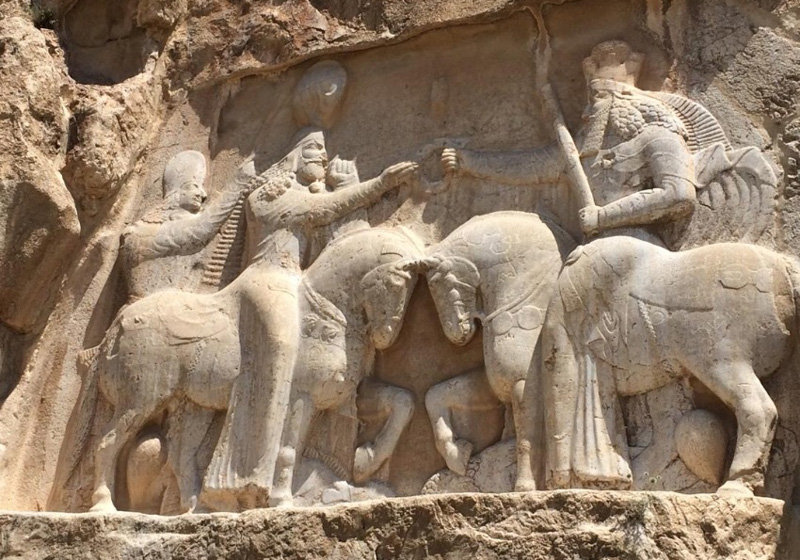
Timur and Amir Hussein conquered all of Transoxiana, and in 771 AH (1369 AD), they formed the Qara Del Khanate, consolidating Timur’s power. However, he did not officially proclaim the title of sultan for himself. In 773 AH (1371 AD), Timur established the Great Qara Del Khanate and seized control of the government.
The Timurids succeeded the Mongol Ilkhanids in Iran, and during their rule, significant progress was made in science and art.
The peak of Timurid political power was during the reign of Timur. Through his three, five, and seven-year campaigns, he expanded his territory from Transoxiana to India, solidifying his rule, which saw considerable cultural and political development during the reigns of his successors.
The Timurids based their government on religion, adhering to Sunni Hanafi Islam. Religious freedom was not widespread during their rule. Nevertheless, many Shiites lived in the Timurid political sphere, and during the later periods of Timurid rule, with the support of Shiite ministers, they enjoyed a favorable status. Architecture flourished during this period, with numerous mosques and Sufi lodges being built across the country.
The art of the Timurid era was one of the most significant aspects of Central Asian and Iranian art. This period is renowned for advancements in art, culture, mathematics, history, and astronomy. Cities such as Herat, Isfahan, Tabriz, and Samarkand were centers for the gathering of artists and the flourishing of art. During this era, the art of miniature painting and Nasta’liq calligraphy reached its zenith.
Khalil Sultan, Shahrukh, Ulugh Beg, Abu Sa’id, and Sultan Husayn Bayqara were among the Timurid successors.
Qara Qoyunlu (1375–1468 AD / 777–873 AH)
The Qara Qoyunlu, belonging to the Turkmen tribes, ruled over Eastern Anatolia from 777 to 873 AH. They gained control over the lands within Iran, and their domain extended from the east to the borders of Herat. The Qara Qoyunlu were Shia Muslims, and notable kings like Qara Muhammad, Qara Yusuf, Qara Iskander, and Jahan Shah were considered famous rulers of this dynasty.
Aq Qoyunlu (1450–1501 AD / 824–907 AH)
The Aq Qoyunlu, hailing from the Turkmen tribes of Diyarbakir and Anatolia (in present-day Turkey), formed a government after the Mongol period in the 15th century AD. Their rule commenced in 824 AH (1421 AD). After coming to power, they used the title of Shah and considered themselves heirs to the Iranian kings.
Uzun Hasan, Khalil Shah, Ya’qub Shah, Baysonqur Shah, Rustam Shah, Ahmad Mirza, Muhammad Mirza, Alvand Mirza, and Sultan Murad were the Shahs of the Aq Qoyunlu dynasty.

Safavids (1501-1735 AD – 907-1148 AH)
“Shah Ismail I” in the year 907 AH (1501 AD) assassinated the Shirvanshah in a battle and was crowned in Tabriz. After establishing political and territorial identity, he formed a centralized government called Safavids in Iran and declared Twelver Shia Islam as the official religion of his state. Shah Ismail Safavi defeated Shaybani Khan, the leader of the Uzbeks, in the Battle of Merv.
During the rule of Shah Ismail I, “Sultan Selim of the Ottoman Empire” with a Sunni religious decree initiated a massacre against the Shi’as and invaded Iran. Ismail defeated the Ottoman army in the Battle of Chaldiran and took control of Diyarbakir. This event had a significant impact on Ismail’s behavior, and he never again entrusted the command of his army in battles.
“Shah Tahmasb” succeeded Shah Ismail. He stabilized the power of the Safavids and maintained control over Iran for about half a century. After Shah Tahmasb, elements of Georgians, Armenians, and Circassians held various positions in the royal court, and often, Qizilbash would place a prince of their choosing on the throne.
The Safavid dynasty was founded by Shah Ismail Safavi, and Shah Abbas I elevated it to its peak.
“Shah Ismail II” was brought to power by the Qizilbash after Shah Tahmasb. After coming to power, he committed a mass killing of royal princes and blinded many of them. Eventually, a year later, he was poisoned to death. After him, his brother, “Mohammad Khoda Bandeh,” became the shah. Shah Mohammad, in 966 AH (1558 AD), handed over his crown to “Shah Abbas I,” also known as “Shah Abbas the Great.”
Shah Abbas the Great was the most significant ruler of the Safavid dynasty, bringing its power to its zenith. He defeated the Uzbeks in the east and, in 998 AH (1589 AD), through a treaty, ceded many western territories to them. After stabilizing the eastern borders, he confidently went west and defeated the Ottomans in 1014 AH (1605 AD), pushing them out of his realm.
Shah Abbas achieved many political and military successes during his reign. In his era, art reached its pinnacle, and progress was made in silk production, silk textiles, illumination, calligraphy, and architecture. Isfahan transformed into a thriving and commercial city. The Golden Age of the Safavids was during the rule of Shah Abbas I, earning him the title “Kabir” (the Great).
The rulers who came after Shah Abbas I did not possess his power and insight. In the period of “Shah Safi,” considered his successor, the cities of Qandahar and Baghdad were lost to the Safavids. After Shah Abbas II ascended to the throne, the Safavid government weakened, and it eventually collapsed into a decline during the reigns of “Shah Suleiman” and “Shah Sultan Hussein,” leading to the Afghan invasion.
The Safavid decline reached a point where the Afghans seized Qandahar in 1120 AH (1708 AD). After capturing Yazd and Kerman, Mahmud Afghan besieged Isfahan, the capital of the Safavids, and in 1135 AH (1172 AD), the Safavids were ousted from the throne by the Afghans. At the time of the Safavids’ arrival, the majority of the Iranian people were Sunni Muslims, and Shi’as were more concentrated in Shia-inhabited areas. With the rise of Shah Ismail Safavi and the formalization of the Shia faith, people turned to this faith, leading to a kind of unity among them.
The recognition of the Shia denomination in the Safavid government made Iran separate from other Sunni Islamic countries and became a motive for the formation of sectarian wars. With the reign of Shah Abbas Safavi, the power of the clergy and other religious classes was reduced. However, in the later periods of this government, the power of religious scholars increased. During this era, religious scholars wrote numerous religious books in Arabic, with “Bihar al-Anwar” by Majlisi being one of them.
Numerous architectural and religious structures were built during the Safavid period. Shah Abbas, for the prosperity of trade, ordered the construction of numerous caravanserais and the repair of various roads for the convenience of transporting goods, with mosques being among the most important constructions.
Afsharids (1735-1796 AD – 1148-1174 AH)
“Nader Qoli,” from the Afshar Qarqlu tribe and the Qizilbash, played a significant role in the rise of the Safavids to power. Shah Ismail Safavi in 970 to 930 AH (1562 to 1523 AD) displaced a group of Afshar tribes to Abyaneh and Nassau in the northern Khorasan region. Nader, in Abyaneh, entered the service of the city’s ruler and gained his trust with courage and skill, marrying his daughter.
“Shah Tahmasb II,” after witnessing Nader’s bravery, appointed him as the ruler of Abyaneh after the death of its ruler in 1136 AH (1723 AD). Nader became a commander of the army, and in this position, he accomplished deeds that earned him great renown. With victories over the Afghans in the Battle of Mahmudabad Damghan, Sardarakhur in the Alborz Mountains, and Morchekhort in Isfahan, he seized the capital of Safavids in 1142 AH (1729 AD). Nader initially placed Shah Tahmasb II on the Safavid throne and went to war with the Ottomans. With the defeat of Shah Tahmasb II by the Ottomans, the pretext for removing Shah Tahmasb II was created.
Nader Shah of the Afsharids took over the rule of Iran in 1148 AH (1735 AD) and established the Afsharid government in Mashhad. He ruled for nearly 12 years and during this time engaged in continuous wars with the Ottomans, Russia, India, Bukhara, Khwarazm, and Dagestan.
Pressures faced in his youth haunted Nader during the later years of his life, leading to a peculiar illness, filled with rage and tyranny. Ultimately, he fell from power at the hands of some of his close associates.
Ali Qoli Khan, known as Adel Shah, Shahrokh, Mir Mohammad Motale, and Nader Mirza were his successors. They couldn’t manage the difficulties of succession well and lacked the capability to preserve Nader’s realm. Most of Nader’s territory was seized by the Zand and Qajar dynasties. Consequently, the Afsharid dynasty ended with the execution of Nader Mirza, the last ruler of the Afsharids, by Fath Ali Khan Qajar.
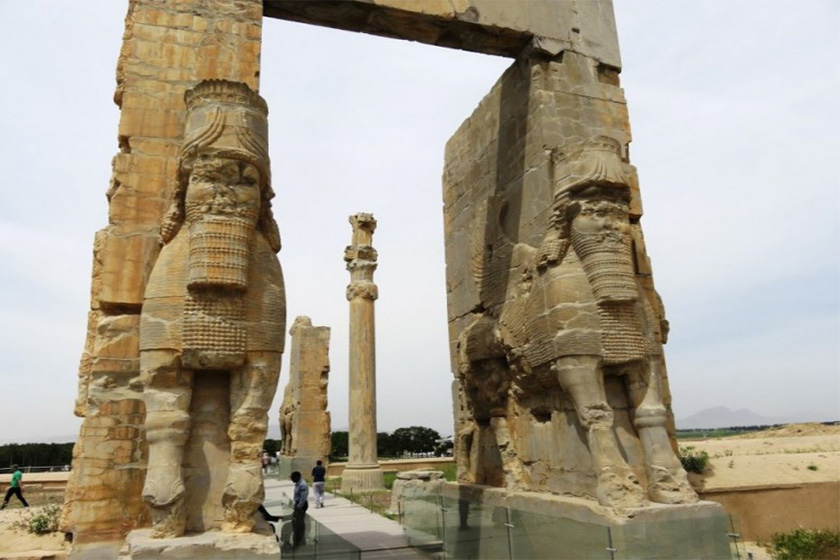
Zand Dynasty (1716–1760 AD – 1129–1174 AH)
The Zand Dynasty was one of the Iranian dynasties that ruled Iran for 45 years, from 1129 to 1174 AH (1716 to 1760 AD), following the collapse of the Afsharid Dynasty until the rise of the Qajar Dynasty. The Zands were of Lur descent, and under the leadership of Karim Khan Zand, they came to power in 1163 AH (1749 AD).
Karim Khan, from the Zand tribe and a member of the commanders of Nader Shah Afshar’s army, was a wise and shrewd leader. Upon gaining power, he modestly referred to himself as the “Vakil-al-Ra’aya” (the Advocate of the People) and refrained from using the title and designation of Shah. By taking control of the city of Malayer, he established his dominance over Iran and designated Shiraz as his capital. The Arg of Karim Khan, Vakil’s Bath, Vakil Bazaar, and Vakil Mosque in Shiraz are some of the architectural remnants from the Karim Khan Zand era. During his rule, religious tolerance was established, and due to the secure environment, Shia scholars returned to their activities in the country.
Karim Khan Zand, by creating a peaceful environment, laid the groundwork for cultural growth. Although he had no interest in poetry and literature, many poets and writers joined literary circles during his era, contributing to the flourishing of these gatherings.
Zaki Khan Zand, Jafar Khan Zand, and Lotf Ali Khan Zand were successors of Karim Khan.
Qajar Dynasty (1761–1886 AD – 1175–1304 AH)
After the death of Fath Ali Khan Qajar, Mohammad Hasan Khan, the head of the Ashaqbaashi tribe who held the position of Sepahsalar in the army of Shah Tahmasb II Safavi, seized the opportunity of Iran’s turmoil following the demise of Nader and gained power in the northern part of the country. Ahmad Khan Abdali, Azad Khan Afghan, and Karim Khan Zand were his main enemies and rivals. Mohammad Hasan defeated Ahmad Khan Abdali and Azad Khan Afghan, taking control of Azerbaijan.
Mohammad Hasan Khan temporarily placed his son Agha Mohammad Khan in charge of the government of Azerbaijan. This was the first experience of Agha Mohammad Khan in governance. Karim Khan Zand was Mohammad Hasan Khan’s final adversary, and he defeated him in battle, capturing his sons.
Agha Mohammad Khan Qajar, the founder of the Qajar dynasty and its first king, appointed his nephew Fath Ali Shah as his successor since he had no children. The first and second Russo-Iranian wars, which led to the formation of the Golestan Treaty and the Turkmenchay Treaty, were among the most significant events of Fath Ali Shah Qajar’s reign.
After Fath Ali Shah, Mohammad Shah Qajar took over, and after him, a 50-year period of Naser al-Din Shah began. The most important events of Naser al-Din Shah’s era were the privileges granted to foreign governments. Additionally, important treaties were signed between Iran and other foreign countries. Naser al-Din Shah ascended the throne after Mozaffar al-Din Shah and signed the Constitutional Revolution, a crucial event in this period, on 14 Mordad 1285 SH (equivalent to 1334 AH and 1906 AD).
Mohammad Ali Shah Qajar, the successor of Mozaffar al-Din Shah, came to power, closed down the parliament, and abolished the constitutional monarchy. Finally, during the time of Ahmad Shah, Reza Shah Pahlavi dismantled the Qajar dynasty in 1294 SH (1915 AD).
Pahlavi Dynasty I (1304 to 1320 SH – 1925 to 1941 AD)
Reza Shah, hailing from the Qajar military, along with the support of Seyyed Zia al-Din, orchestrated a coup against the Qajar dynasty. In 1299 SH (1920 AD), Reza Khan entered Tehran with Qajar forces and occupied the city. In 1300 SH (1921 AD), he took over the Ministry of War, establishing security in the country. Later, in 1302 SH (1923 AD), he was appointed Prime Minister by Ahmad Shah Qajar.
In 1304 SH (1925 AD), dissatisfaction with the Qajar rule led to Reza Khan declaring the dissolution of the Qajar dynasty. He was instrumental in laying the foundation for modernization in Iran and implemented reforms and developments, with the construction of the European-style railway and the establishment of the University of Tehran being among the most significant. He also ordered the conversion of the recorded events and calendar from the Hijri lunar calendar to the Solar Hijri calendar.
Contemporary History
Contemporary history of Iran begins four years after the rule of Mohammad Reza Shah Pahlavi, in 1324 SH (1945 AD).
Pahlavi II
World War II brought turmoil to Iran, leading to Reza Shah’s abdication. Mohammad Reza assumed the throne in 1320 SH (1941 AD). The establishment of the Fourteenth Parliament, nationalization of the oil industry, withdrawal of Soviet forces from Iran after the end of World War II, the August 28 coup, the Baghdad Pact, and the formation of the National Front were among the key events of this period.
With the Islamic Revolution in 1357 SH (1978 AD), the Pahlavi regime came to an end, and the Islamic Republic took its place.
Islamic Republic of Iran, 1357 SH
Following the Islamic Revolution in February 1979 (1357 SH), Imam Khomeini (RA) became the Supreme Leader of Iran. The Iraq-Iran War and the eight-year imposed war were among the most significant events of this period. After the passing of the founder of the Islamic Republic in 1368 SH (1989 AD), Ayatollah Khamenei was elected as the Leader of Iran by the Assembly of Experts. In this government, the president is elected every four years through popular vote.
The founder of the first centralized government in Iran was Cyrus the Great, who established the Achaemenid Empire. Cyrus the Great was crowned in 550 BCE, laying the groundwork for the initial centralized government in Iran.
Origin of the Name Iran
Iran was not originally known as “Iran” but rather by names such as Persia, Pars, and Fars among other countries. Saeed Nafisi proposed the use of the term “Iran” instead of “Persia” in the early 20th century. Initially, this naming faced opposition as Persian politicians considered “Persia” to be an internationally recognized name. However, proponents of this renaming argued that “Iran” was the best term to describe the political power and cultural heritage of the country.
In 1314 SH (1935 AD), based on a directive from the Iranian Ministry of Foreign Affairs and the request of Reza Shah’s government, the term “Iran” was officially chosen to name the country, replacing other designations.
Professor Arthur Upham Pope, an American Iranologist, writes in his book “Masterpieces of Persian Art,” translated by Parviz Natel-Khanlari:
The term “Iran” was used in the first millennium BCE for the plateau of Iran and its geographical regions.
According to Mohammad Moin, a prominent Iranian scholar, the root and meaning of the word “Arya” are clear, and countries belonging to the eastern part of the Indo-European region proudly identify themselves with this name. Common Indo-Iranian ancestors also referred to themselves with this name, calling their country “Iranvej.”
The term “Aryan” is used in the Avesta to address an honorable and authentic people, and the word “Iran” appears about 300 times in Ferdowsi’s Shahnameh.
Iran’s history, both before and after Islam, is rich with diverse and varied events. Summarizing all historical events in a short text is challenging. Therefore, this text focuses on presenting the chronological order of Iranian dynasties and mentioning key historical events of each period. If you have any thoughts about the history of Iran, feel free to share them with us and Koocharoo users.
Frequently Asked Questions:
Which governments were included in the pre-Islamic period in Iran?
Elam, Medes, Achaemenids, Arsacids, and Sassanids.
How many governments were formed in Iran in the post-Islamic period?
From the time of the Tahirids to the end of the Qajar dynasty, 15 governments were formed in Iran.
Who was the founder of the first centralized government in Iran?
Cyrus the Great, 550 BCE.
Since when has the term “Iran” officially been used to refer to the country?
From 1314 SH (1935 AD) during the reign of Reza Shah Pahlavi.


